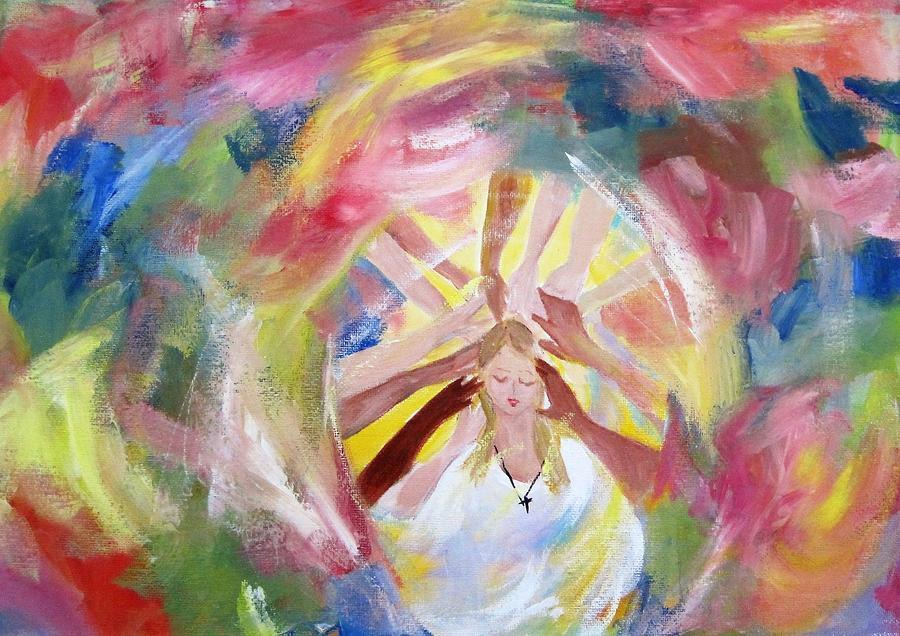Dear Friends,
Thank you for all the emails and comments I received following last week’s e-news. It seems that it brought back many memories for you of your own childhoods and some of your family traditions. This Sunday is the Fourth Sunday in Lent, also known as Laetare from the opening word of the old Latin introit of the mass: ‘Laetare Jerusalem et conventum facite omnes qui diligitis eam,’ which is from the prophecy of Isaiah 66:10 – ‘Rejoice with Jerusalem, and be glad for her, all you who love her.’ Thus, yet again, we are reminded that Lent is a joyful season in which we can grow closer to the Lord. The color for Laetare Sunday is rose pink; that color is only used on two Sundays of the year – Advent 3, and Lent 4.
When I grew up in England, the old English Hymnal called this Sunday Refreshment Sunday because it marked a relaxing of Lenten discipline midway through Lent. It was also known as Mothering Sunday because Mothers’ Day in the UK is kept on the Fourth Sunday in Lent. Churches would give flowers to all the women in the congregation and sometimes there would be sermons about ‘Mother Church’ and the Blessed Virgin Mary, and our own mothers. Of course, as I grew older, I recognized that Mothering Sunday was also a sad day for many people who had lost their mothers, or who had suffered the death of a child, or who had experienced poor parenting, or who were unable to conceive a child or become a mother for whatever reason. What can be a day of rejoicing for one person can be a sad reminder for another.

The Fourth Sunday in Lent is also a traditional time to eat Simnel Cake – a traditional British fruit cake, lighter than Christmas or Wedding Cake, and decorated with marzipan. Many people put marzipan inside the cake as well as on top, and it is completed with eleven balls of marzipan which are brushed with egg and then gently burnished with a flame or under a hot broiler. The number eleven represents the Apostles – minus Judas. This Sunday, we will be having Simnel Cake after the 9am mass and Simnel Cup Cakes after the 11am mass. Now, that’s what I call refreshment!
Following the 11am Mass this Sunday, March 19, we are reviving the practice of providing intercessory and healing prayer in the Chantry Chapel. If you would like someone to accompany you to the throne of grace, to pray with you and for you for restoration, healing, renewal, for yourself or a loved one, please approach one of the prayer ministers in the Chantry Chapel after Mass. Healing oil will also be available for the Anointing of the Sick by one of the clergy.

Finally, I am writing this on Saint Patrick’s Day. We had a lovely quiet celebration at 8am this morning, and reflected on Patrick’s extraordinary story worthy of a Hollywood movie or a wonderful cantata. Captured by Irish Pirates as a boy and forced to be a slave for several years, the story of Patrick is one of deep faithfulness. His journey of faith incorporated all the ups and downs of his life. He visited St. Martin of Tours, the saintly and humble monk-bishop, and then became the Apostle to the Irish. There are many stories in Irish folklore, some of which are rather far-fetched, but what is clear is that this missionary saint still inspires many to this day. If you visit the town of Downpatrick, in Northern Ireland, you will find the Anglican Cathedral’s graveyard, the burial place of Patrick. You will find no grand tomb or shrine there; instead, a simple stone slab with a cross and his name. The last letters of his name are obscured by a break in the stone which, poignantly, I find is a reminder of the divisions experienced in Ireland.

The Gospel that we read this morning was the calling of the first disciples in Luke’s Gospel, chapter five, when Jesus borrows Simon Peter’s boat, and teaches the large crowd gathered on the shore. Jesus then asks Simon to pull out into deep water to fish. Now, I have met fisherman who work on trawlers and I can assure you that, after a night of fishing and with all the nets sorted and washed, the last thing they would have wanted to do was to go back out, and yet they do. It was not until they pulled out into the deep that they caught the miraculous catch of fish, and Jesus called them to follow him. It is easy for us to stay in shallow water by the shore, rather than go out into the deep, with all its dangers; but as Simon Peter, and James and John, and Patrick and Brigid, and all the saints have discovered, you sometimes have to go into deep waters in order to discover God’s call. So, here’s a little suggestion for this weekend: Think of someone you have not seen in church recently, or during the pandemic; think of a friend or neighbor who has never experienced Saint Thomas, and invite them to accompany you to church this Sunday! It may feel like you are pulling out into the deep, and you may even be a little afraid of what they might say, but you will be responding to the call of Jesus who still says, “Follow me!”
Affectionately,
Your Priest and Pastor,
Carl

